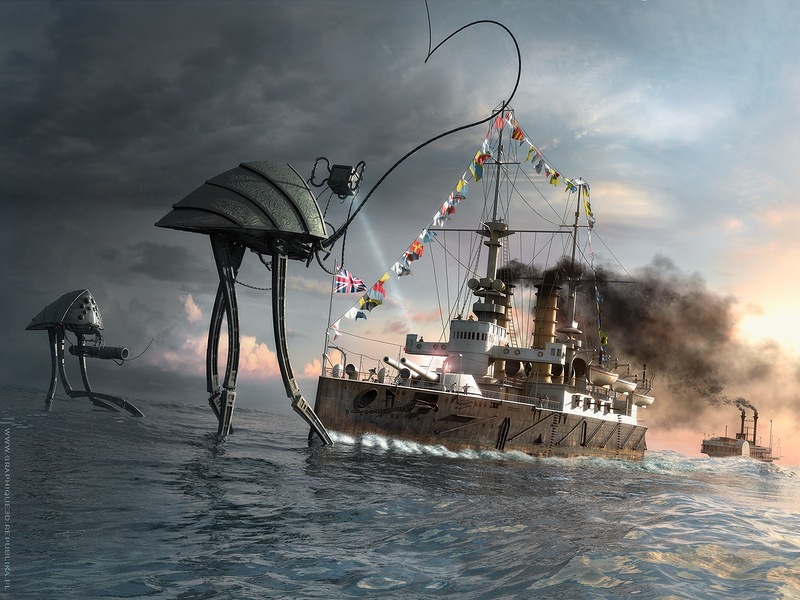Space is big. Really big. You just won’t believe how vastly, hugely, mind- bogglingly big it is.
Spaceships are really big too.
The first few lines, as you probably recognised, are from Douglas Adams’ Hitchhiker’s Guide to the Galaxy. The other line about spaceships? That’s from pretty much every other off-world sci-fi movie of the last few decades. But it’s beginning to look like – at least for the foreseeable future – it’s wrong.
It’s tempting to blame the error on something that happened a long time ago in a cinema far, far away – the overwhelming opening shot of the first Star Wars film. That’s first as in the first one made and the first good one in the finished sequence. After the backstory has crawled by, Princess Leia’s (fairly sizeable) spaceship zips across the screen. Then behind it, with the speakers shaking the seats, comes the Imperial Star Destroyer which takes a full 12 seconds to rumble over our point of view. Twelve seconds – we’re into a whole new galactic scale of bigness.
That was 1977, and its success, coupled with giant strides in CGI, has ensured our visions of exploring the galaxy are full of fleets of fantastically large spacecraft. Even ignoring the huge shadow cast by alien visitors like the mothership in Close Encounters or the landmark-zapping saucers in Independence Day, we’ve grown used to the idea of humans criss-crossing the cosmos in vast vessels like Nostromo in Alien, the titular Event Horizon, the six mile-long Red Dwarf, or the many colossal starships in series like Stargate and Battlestar Galapagos (as it’s always known in my house).
Thinking big didn’t begin with George Lucas in 1977. By then we’d already headed off from Earth in Discovery One in 2001, The Valley Forge in Silent Running, the USS Enterprise in that 60s TV series and many more. But the further back you go – at least in films and television – the more the limitations of model-making and special effects kick in, so that from Flash Gordon’s rocketship in the 30s to most flying saucers in the 50s it seemed all pilots of the future (with the possible exception of Dan Dare) were permanently drunk.
Tiny steps and giant leaps
So, 1977 is a significant point in terms of spacecraft though not only because it gave us the defining vision, but because it also gave us what’s turning out to be the confining reality. This week it is 35 years since the launch of Voyager 1, which blasted off in the general direction of the outer solar system on 5 September 1977. Less than 18 months later it had reached Jupiter. A little longer again and it was flying by Saturn. That was August 1980, and it’s still voyaging. This 1,600 lb (725kg) spacecraft – some pumpkins are heavier – is only now reaching the edge of our solar system (Douglas Adams was right about space being big), and is about to become our first interstellar spacecraft. Not only our first, our last for some time.
We’ve no current firm plans to venture beyond our home system. And even within it we are scaling down exploration. Just over a month ago when the Curiosity rover was successfully put down at what’s now – in honour of the late great Ray Bradbury – been renamed the Bradbury Landing, there were only blank pages in Nasa’s own Martian Chronicles. Nothing in the pipeline for getting humans there (let alone back), no commitment for an unmanned attempt to return a sample from its surface, not even a date for a follow up on a similar scale to the Mars Science Laboratory mission which landed Curiosity.
Since then Nasa has announced that in 2016 they will launch InSight, a wonderfully contrived acronym short for Interior Exploration using Seismic Investigations, Geodesy and Heat Transport. But this is far simpler, and far less costly, than Mars Science Laboratory. And vastly cheaper than any manned Mars mission would be. InSight could and should tell us useful things about the geology of Mars, but it is a sign that for some time to come our horizons, and our spacecraft, are shrinking.
With a global economic downturn it’s only reasonable that Nasa and other space programmes are not exempt from cutbacks. But there are plenty who argue that it’s precisely because of all our problems down on Earth we mustn’t let the belt-tightening constrict our imagination in looking beyond it.
On Quentin Cooper’s BBC radio programme, David Southwood – president of the Royal Astronomical Society and until recently director of science and robotic exploration at the European Space Agency Esa – talked about the success of Curiosity and how “this should be the way ahead for exploration in a serious way”. Instead, earlier this year Nasa pulled out of the ambitious joint ESA ExoMars mission. “It’s very frustrating”, he told me, “we’re going to move forward in very small steps”.
Part of our legacy from Neil Armstrong and the Apollo programme is knowing that small steps can sometimes still be giant leaps. Another part of that legacy though is knowing that for all the imagination and inspiration and ingenuity that took us to the Moon, we never followed up on the trail blazed by the 12 men who walked there.
It may be a while before we get people to Mars or even back to the Moon, and much longer still before we go beyond our solar system. Hence projects like the 100 Year Starship Initiative which are working on a century as a realistic deadline by which interstellar flight can be achieved. But however small the steps and – for now – however small the spacecraft, we have to keep edging away from mother Earth. As Voyager 1 heads off beyond our solar system, we need to ensure it’s not too long before it has some company. Even if it’s nothing like the giant spaceships we see on screen.










